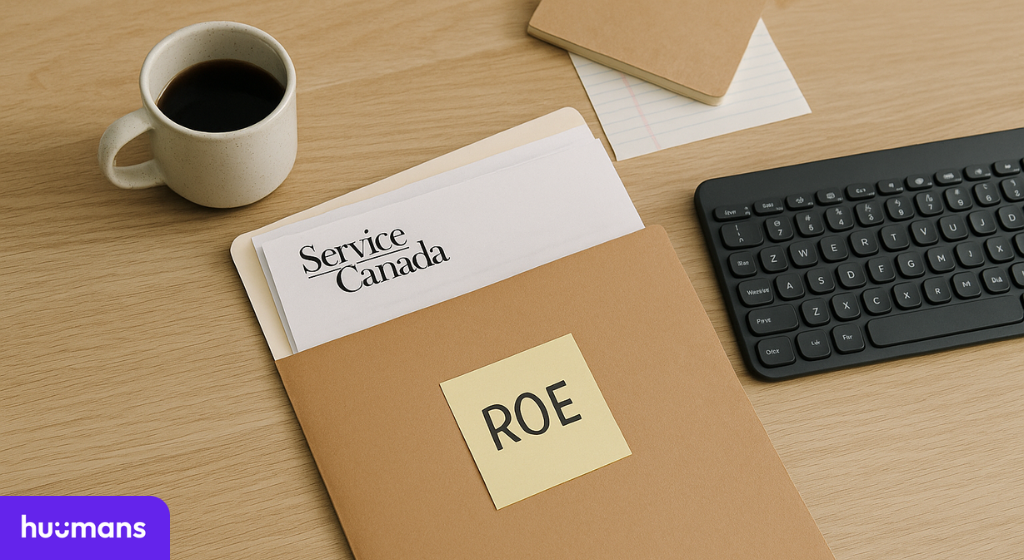

In the alphabet soup of employee payroll forms, ROEs stand out. Unlike a pay stub that’s created every time you run payroll, ROEs are only triggered under specific situations, like when an employee leaves or is taking long- or short-term leave. But, of course, since they’re payroll forms, there are rules. You’ve got to issue them on time, and they’ve got to be accurate. In this article, we’ll cover the highlights.
An ROE is a government form employers must issue when an employee has an interruption of earnings, in other words, when the employee stops working or being paid. The ROE is then sent to Service Canada either by standard mail or electronically to determine which supports (EI, disability, pension, leave, etc.) the employee is eligible to receive. Service Canada uses the ROE to decide if someone qualifies for EI benefits, how much they’ll receive, and for how long.
For employees, ROEs are their ticket to qualifying for key benefits like unemployment insurance. For you as an employer, you’re job is to get them out on time and get them right. Delays and mistakes cause friction between you and your employees, as well as Service Canada and the Canada Revenue Agency (CRA)/Revenu Québec (RQ).
Employers issue an ROE whenever there’s an interruption of earnings, such as when an employee goes or will go seven or more consecutive days without getting paid. This is known as the 7-day rule.
Note: Most types of leave automatically trigger an ROE, independent of the 7-day rule.
While the 7-day rule applies to how long income will be interrupted, the 5-day rule applies to how long you have to issue an ROE.
For more on payroll schedules, check out this article.
You can get a paper ROE form by contacting the Service Canada Employer Contact Centre at 1-800-367-5693. (Be sure to have your payroll account number handy to place your order.) However, it’s faster and more efficient to create electronic ROEs.
Another perk: With electronic ROEs, you don’t have to print any paper copies for employees. To access electronic ROEs, employees need to visit their personal My Service Canada Account (MSCA).
The core employee information in an ROE includes:
Common ROE codes:
ROEs and all your small business payroll functions are important. You want to be able to log in, follow a few simple steps and consider it done. We couldn’t agree more, which is why we bring you Huumans Payroll. Plus, you can pay up to five employees for free for the first year.
Where you can learn more about ROEs and small business payroll.
Employee details, employment dates, insurable hours and earnings, and the reason for separation.
Within five calendar days of the last day worked or the end of the pay period in which the interruption occurred.
No. ROEs are for employees only.
Yes. ROE Web is the fastest and most common method.
Six years plus the current year for a total of seven years. Learn more about keeping payroll records.
Why the disclaimer? Because the fine print changes all the time. We want to be helpful and accurate, but we also want to be upfront. This blog helps you make sense of payroll — it doesn’t replace your accountant, bookkeeper, or lawyer.
We do our best to keep things accurate, but if you catch something off, let us know and we’ll fix it. And if we link to other sites, that’s just us sharing resources — what they say is on them, not us.